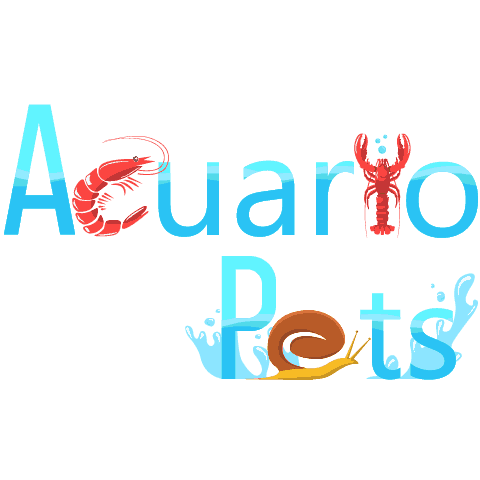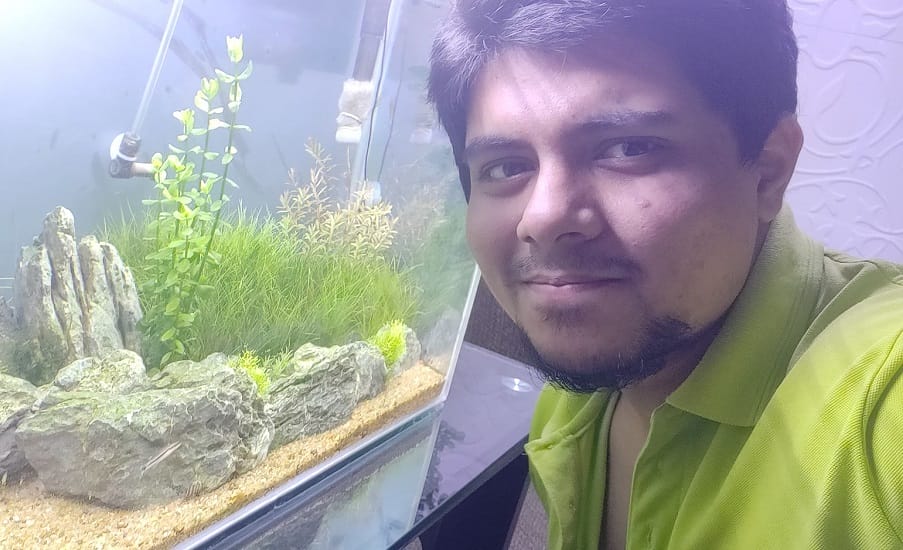This post was created with help from AI tools and carefully reviewed by a human (Muntaseer Rahman) . For more on how we use AI on this site, check out our Editorial Policy.
Check Out These FREE Tools We Made JUST For You!
The Truth About Betta Tank Size and Why 1 Gallon is Never Enough

Look, we need to talk about something that’s been bothering me for years.
You walk into any pet store and there they are—beautiful bettas swimming in tiny plastic cups like they’re at some kind of underwater prison. And right next to them? Those “cute” one-gallon tanks shaped like lightbulbs or flower vases.
The store employee smiles and tells you bettas “prefer” small spaces because they live in puddles in the wild.
That’s complete garbage. And I’m going to tell you why.
The Big Fat Lie About Puddles
Here’s what pet stores won’t tell you: wild bettas have territories averaging about 11 gallons.
Not half a gallon. Not one gallon. Eleven gallons.
In the wild, bettas live at a density of 1.7 individuals per square meter, which translates to roughly one square meter of territory per male betta. That’s about three feet by three feet of space, folks.
“But wait,” you’re thinking, “I’ve seen videos of bettas being caught in tiny spaces!”
Yeah, and I’ve seen videos of people living in their cars during a hurricane. Doesn’t mean they prefer it.
Bettas only end up in puddles during the dry season when their actual habitat evaporates. It’s a survival mechanism, not a lifestyle choice. Many of them literally die during these drought periods from the stress and poor water quality.
Would you keep a dog in a closet just because he could technically fit? Of course not.
What Actually Happens in a 1-Gallon Tank (Spoiler: It’s Bad)
Let me paint you a picture of life in a one-gallon prison.
The Ammonia Death Trap
Every time your betta breathes, eats, or poops, ammonia enters the water.
Most ammonia in your tank actually comes from your betta exhaling, not from waste. In a tiny tank, this toxic gas builds up fast.
Ammonia is highly toxic to bettas and can cause symptoms including gasping for air, red streaks on fins and body, inflamed eyes, and lethargy.
Here’s the kicker: in tanks under 5 gallons, the water volume is so small that beneficial bacteria can’t establish properly. Without these bacteria, there’s nothing converting that ammonia into less harmful substances.
You’d need to do daily water changes of 50% or more just to keep your fish from slowly poisoning itself.
Temperature Rollercoaster
Bettas are tropical fish requiring temperatures between 76-81°F.
In tiny tanks, maintaining stable temperatures is nearly impossible because small volumes of water heat up and cool down rapidly. Your betta goes from comfortable to freezing every time your AC kicks on.
It’s like living in a house where the thermostat swings 15 degrees every few hours. You’d lose your mind too.
The Stress Prison
Keeping a betta in a one-gallon tank is like an adult living in a closet—yes, you’ll survive, but you won’t be thriving or happy.
Bettas are smart, curious fish. They’re inquisitive and active, and they like to patrol and explore their territory. In a one-gallon tank, they can barely turn around, let alone exhibit natural behaviors.
The result? Glass surfing (swimming frantically up and down the sides), fin biting from stress, and a lethargic fish that just lies on the bottom looking dead.
So What’s The Actual Minimum?
Here’s where the fish community actually agrees on something.
The absolute bare minimum is 2.5 gallons. But honestly? Most experts recommend 5 gallons as the minimum for a healthy, happy betta.
Why 5 gallons specifically?
In larger tanks, nitrates build up more slowly, the bacterial colony is more stable, and you won’t need to do water changes three times a week. Plus, 5-gallon tanks are usually at least 12 inches wide, giving your betta actual swimming space.
What About Those “Betta Experts” Who Say Otherwise?
You’ll always find someone online claiming their betta lived for years in a half-gallon bowl.
Cool story. My grandpa smoked a pack a day and lived to 90. That doesn’t mean smoking is healthy.
The difference between a betta in a 2.5-gallon tank versus a 10-gallon tank is mind-blowing—they’re literally different fish in larger tanks. More active, brighter colors, better health, longer lifespan.
Setting Up a Proper Betta Tank
If you’re going to do this right, here’s what you need:
Tank Size Table
| Tank Size | Verdict | Notes |
|---|---|---|
| Under 1 gallon | Never acceptable | Toxic buildup happens in hours |
| 1-2 gallons | Survival only | Requires daily water changes |
| 2.5 gallons | Bare minimum | Very difficult to maintain |
| 5 gallons | Recommended minimum | Stable, manageable, healthy |
| 10+ gallons | Even better! | Room for plants and décor |
What You Actually Need
Heater: Non-negotiable. Bettas need 76-81°F water temperature.
Filter: Your filter should process all tank water at least 4 times per hour. For a 5-gallon tank, that means at least 20 gallons per hour flow rate. Get one with adjustable flow because bettas don’t like strong currents.
Plants and hiding spots: Remember, wild bettas live in heavily vegetated areas with tons of plants providing security from predators. Your betta needs places to hide and explore, not an empty glass box.
Proper cycling: It takes 4-6 weeks to build beneficial bacteria that can handle your fish’s waste. Start your tank cycling BEFORE you buy the fish. Trust me on this.
The Bottom Line
Pet stores keep bettas in cups because they’re aggressive to each other and the stores need to move inventory fast.
That doesn’t mean your betta should live like that at home.
Fish are capable of being happy and unhappy, and they experience pain and suffering just like other animals. Your betta deserves better than a cup-sized existence.
Is a 5-gallon tank more expensive than a one-gallon bowl? Yeah, by maybe $20-30. But you’ll spend way less time doing water changes, your fish will actually thrive instead of just surviving, and you won’t have to watch a beautiful creature slowly deteriorate from ammonia poisoning.
Here’s my challenge: If you currently have a betta in anything smaller than 5 gallons, upgrade. Watch what happens. Within days you’ll see more activity, better colors, and actual personality emerging.
Because bettas aren’t decorations. They’re living animals who deserve space to swim, explore, and live their best fish lives.
Stop listening to the pet store. Start listening to actual betta keepers who’ve seen the difference.
Your fish will thank you. (Probably by building a bubble nest, which they only do when they’re happy and comfortable.)
Now go upgrade that tank.
About Author
Hello, I’m Muntaseer Rahman, the owner of AcuarioPets.com. I’m passionate about aquarium pets like shrimps, snails, crabs, and crayfish. I’ve created this website to share my expertise and help you provide better care for these amazing pets.
Disclaimer
This site is owned and operated by Muntaseer Rahman. AcuarioPets.com is a participant in the Amazon Services LLC Associates Program, an affiliate advertising program designed to provide a means for sites to earn advertising fees by advertising and linking to Amazon.com. This site also participates in other affiliate programs and is compensated for referring traffic and business to these companies.

